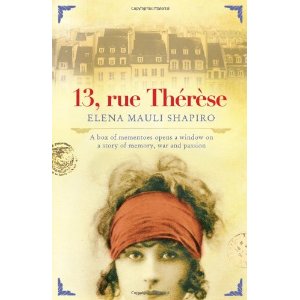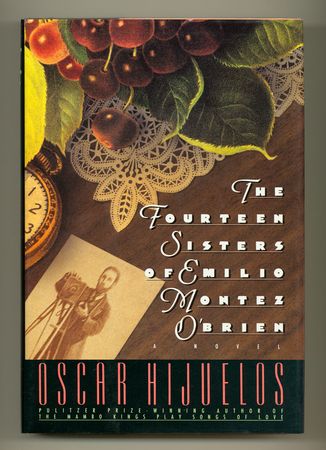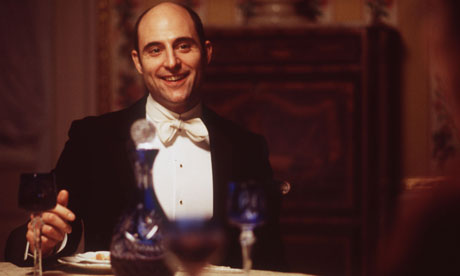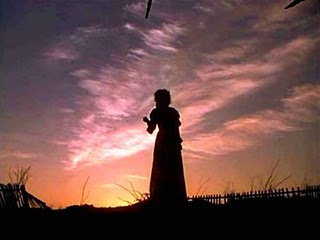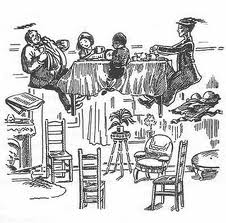Cupid & Diana, by Christina Bartolomeo
Diana Campanella, a decidedly '90s woman with a penchant for early-'50s fashion, can't help but wonder if there isn't more to life. True, making the switch from her dull government job to ownership of a vintage clothing shop has been a personal victory. But the shop is about to go the way of the corset, and Diana's bank balance is dangerously low. Meanwhile, acting as referee between her head-butting sisters (a professional lingerie model in one corner, a perfect Catholic housewife in the other) is intolerable at best. And lawyer-fiancé Philip--handsome, well-dressed, a veritable Clark Kent with a bankroll--provides Diana with stability, security, and a notable shortage of profound passion.
Enter one Harry Sandburg, a displaced New York lawyer with a five o'clock shadow and a rumpled suit to match: "He had the sort of sweet and sad smile some Jewish guys have. It radiated a wry self-deprecation in which there was nothing humble or cringing." Harry is witty, wise, and utterly endearing. To make matters worse, their fervent lovemaking is enough to peel paint from the walls--a fact Diana learns one sweltering evening after a little too much Chianti and meatballs. Profound passion? Yes. But Harry's staying power is questionable, and Diana isn't getting any younger. Amidst mounds of manicotti and family feuds, vintage Roxbury suits and dreary Washington, D.C., political events, Diana struggles to choose between what she should do and what she truly wants. Funny, warm, sophisticated, and intelligent, Bartolomeo's debut is a keen romantic comedy packed with both fictional and fashionable delights.
A Cup of Tea, by Amy Ephron
Ephron's tragic little novel is an elaboration of the Katherine Mansfield short story of the same title. The setting is New York during the first year of U.S. involvement in World War I. Rosemary Fell is a pampered and protected young lady, engaged to marry the ever-so-suitable Philip Alsop. One day, Rosemary comes upon a young woman who has obviously fallen on hard times. Out of a sense of noblesse oblige, Rosemary invites this person--Eleanor Smith--home for a cup of tea. Philip happens to drop by, and a shared glance between him and Eleanor sparks what later flames into an affair. Philip enlists, and his orders to embark for overseas mean that his marriage to Rosemary has to be moved up, but his departure for Europe leaves behind a pregnant Eleanor. Despite being thought killed in battlefield skirmishes, Philip returns home to New York, but no happy ending is to be had. In fact, the under-developed ending left me a little flat.
Midwives, by Chris Bohjalian
From the day back in the '60s when Sibyl Danforth stepped forward in an emergency to help a pregnant friend give birth, she fell in love with the birthing process and dedicated herself to a calling as a lay midwife in rural Vermont. But as her obstetrician daughter, Connie, points out, Sibyl never bothered to obtain certification from the American College of Nurse-Midwives. Still, neighbors who wanted to have their babies at home felt comfortable calling on her. Among Sibyl's patients in 1981, the year Connie turned 14, was a minister's wife named Charlotte Bedford, a fragile woman whose incredibly difficult labor led to a stroke and what appeared to be Charlotte's death. Prevented by a heavy snowstorm from getting Charlotte to a hospital, Sibyl frantically tried to save the baby's life by performing an emergency cesarean on the presumably dead woman. Only after Charlotte is carted away does the question arise: Was the woman actually dead when Sibyl cut her open?
Narrating this superb book, Connie re-creates that terrible year when the state's attorney, Charlotte Bedford's family, the local medical community, and even members of the Danforths' small hometown seemed to conspire to put not just Sibyl but the entire practice of home birthing on trial. Connie, fearing witch-huntstyle reprisals, eventually broke the law to protect her beloved mother's freedom. But the question remains: Did Sibyl kill Charlotte for the sake of her baby? A fantastic and informative read. The courtroom action was tight and suspenseful, but the moments of quieter, “human” action were just as compelling. I couldn’t put it down.
The Lazarus Child, by Robert Mawson
On her way to school, Jack and Alison Heywood's seven-year-old daughter, Frankie, is hit by a truck and sent into a deep coma. Her 12-year-old brother, Ben, who witnessed the accident, is so traumatized that his hair turns white and he becomes nearly catatonic. The medical establishment offers the Heywoods no hope of a cure for Frankie and little help for Ben, whose guilt prompts him to attempt suicide
In desperation, Alison turns to Dr. Elizabeth Chase, a genius neurologist who operates a highly experimental clinic for coma victims in Virginia. Chase, whose own brother died in a coma, is intrigued by Ben's apparent knowledge of what Frankie is experiencing while she is unconscious. His reports that she is fully active in a beautiful world we can't see, tally with Chases suspicions that her coma patients communicate with each other in some sort of “joint plane of awareness”. Welcoming the Heywoods to her clinic despite increasingly threatening attacks by fanatics, the Defense Department, and the local D.A., she urges Ben into her world of the collective unconscious to find and rescue his sister. In the end, Chase must join her young hero in this video-gamelike universe where archetypal characters offer vital provisions and “magic” tokens to help seekers.
It was a good read, an interesting concept - I liked it, but there were times when just too much was going on. The strained marriage of Jack and Alison; Ben’s trauma; Dr. Chase’s motivations; the dream-sequence narratives of Frankie’s experience; sub-plot layered upon sub-plot until the sandwich was just too big to get your teeth into. I’d rather Mawson had picked one or two of the ideas and developed it fully. The ending was kind of vague. Still, an enjoyable read.
Miriam’s Kitchen, by Elizabeth Ehrlich
An assimilated Jewish woman’s attempt to embrace the religioius traditions of her ancestors results in this beautiful book. The memoir traces the deepening relationship between Ehrlich and her mother-in-law, Miriam, as well as Ehrlich's memories of her fiercely left-wing family in the inner city of Detroit. Both families celebrate their Judaism through food, drink, ritual, prayer and family ties. Ehrlich's views on Judaism shift as she travels the road to middle age, first as a young girl, then as a young adult, next as a new wife and, finally, as the mother of three young children. Along the way she explores such complexities as Miriam's memories of the Holocaust and her native Poland, the challenges of managing a kosher home, and the joys and regrets of interfaith unions.
Rich with love, lore, memories, cooking tips and recipes. Outstanding. My favorite.
Land Girls, by Angela Huth
During World War II, young English women left the cozy world of traditional female jobs for exhausting agricultural labor so that male farm workers could take up arms. Agatha, Stella, and Prue are from distinctly different backgrounds and social classes, but genuine patriotism for their country binds them together. Pushed beyond their imagined limits, they all achieve what their culture has denied them as women: adventure, physical challenge, and personal growth. As ordinary citizens fighting for their country the best way they can, they transform themselves into women of honor, courage, and stature, proving themselves more noble than the highest generals.
With her attention to physical detail and human emotion, Huth manages to make the mundane, day-to-day lives of the Land Girls interesting. It’s a quiet book; the action doesn’t jump out and scream at you, the war is far away, the joy is in the characters.
Wives of the Fishermen, by Angela Huth
Anatomy of a friendship. Myrtle Duns, harbors a loving heart, a forgiving disposition, and a keen mind. She and Annie Macleoud have been friends ever since kindergarten, but while Myrtle is steady, beautiful Annie is selfish, frivolous, and notoriously flirtatious. Despite their differences, though, the two are close and loyal friends: Myrtle appreciates Annie's exuberance that lightens even the darkest of days, and Annie relies on Myrtle's good sense. Now married, like all the village women, the two women face the fear of death daily as they play cards and drink tea while their men are away fishing.
As she waits for husband Archie's return, Myrtle recalls the best and worst moments of their friendship: their joyous childhood pranks and the hurt when she learned that Ken Macleoud, the boy she yearned for, was in love with Annie. Later, Myrtle married Archie, a man every bit as good as she, and Annie, jealous, shortly married Ken, whom she didn’t love, and had a daughter, Janice, a girl the childless Myrtle loves as her own.
After Archie's death in an accident at sea, for which Ken and Annie are indirectly responsible, the friendship begins to fray. Myrtle forgives Ken and Annie, but Annie's subsequent behavior, her confessions of long-concealed envy, and her vituperative accusations are no help. Finally, the closeness ends when Myrtle glimpses the 14-year-old Janice trying to seduce the man Myrtle’s just beginning to love. Virtue, though, does indeed have its own reward as a new love and life await Myrtle.
The Inn at Lake Devine, by Elinor Lipman
In the early 1960s, a Massachusetts family suffers a polite awakening. Inquiring about summer openings at a Vermont inn, the Marxes receive a killingly civil response, which ends, "Our guests who feel most comfortable here, and return year after year, are Gentiles." Apparently the Marxes are not quite as ideally average as they thought, at least on the basis of their surname.
Natalie, the youngest Marx daughter, will literally spend years responding to this rebuff. At first she taunts the innkeeper, Ingrid Berry, by phone and mail, stressing by exaggeration that a system which welcomes WASP wife-murderers but not famed convert Elizabeth Taylor is both unfair and inane.
The next summer Natalie manages to engineer an invite to Lake Devine, coming in on the coattails of Robin Fife, a good-natured, none-too-swift fellow camper whose family are regulars at The House of Devine. By the end of her stay, Natalie is fed up with the Fifes' relentless good will and Mrs. Berry's covert ill will. All in all, she is relieved to return to firm social ground, and doesn't devote much thought to her "Gentile ambitions" for the next 10 years.
A letter about a camp reunion, however, brings Robin back into the picture, and Natalie is again invited to Lake Devine--this time for her campmate's marriage to the eldest Berry son. There the unexpected happens, in the form of a horrible accident, and also in the form of love, as the younger Berry brother, Kris, and Natalie lock eyes and hearts.
A really nice, light read wrapped around social commentary, personal identity, and food.
Lost in Translation, by Nicole Mones
Alice Monnegan moved to China after college, and now, known as Mo Ai-Li, makes her living as a translator for visiting businessmen and other Americans. At 36, Alice is still unable to forgive her politician father for breaking up her only serious romance, a decade before, with a Chinese student. She often picks up Chinese men for one-night stands, as if to defy her father's racist beliefs, but in truth, Alice is devoutly enamored of all things Chinese.
Alice's life begins to change when she gets a job helping an American professor search for the whereabouts of a great archaeological treasure: the bones of prehistoric Peking man, which disappeared following World War II. As Americans and Chinese scientists travel to northwest China, where the remains were last seen, Alice falls in love with one of the Chinese members of the team. Alice realizes that she must accept her past and who she really is in order to come to terms with both her father and the man she loves.
The key to the novel's success is Mones's in-depth knowledge of China's culture, history, and politics. The question of cultural identity is at the core of her tale, and she skillfully weaves various aspects of Chinese life -- from ancestor worship to the Cultural Revolution -- into the personal relationships of her characters. By novel's end, readers have discovered a great deal about archeology, China, and most especially about the unmapped territories of memory, desire, and identity. Very entertaining and interesting.
The Last Kabbalist of Lisbon, by Richard Zimler
In 1496, Jews living in Portugal were dragged to the baptism font and forced to convert to Christianity. Many of these "New Christians," in secret and at great risk, persevered in their rituals, and the hidden, arcane practices of the kabbalists, a mystical sect of Jews, continued as well.
One such secret Jew was Berekiah Zarco, an intelligent young manuscript illuminator. Inflamed by love and revenge, he searches, in the crucible of the raging pogrom, for the killer of his beloved uncle Abraham, a renowned kabbalist discovered murdered in a hidden synagogue, along with a young girl in deshabille.
Risking his life in streets seething with mayhem, Berekiah tracks down answers among Christians, New Christians, Jews, and the fellow kabbalists of his uncle, whose secret language and codes both light and obscure the way to the truth he seeks.
A Song for Summer, by Eva Ibbotson
Ellen is a mystery to her family. Her mother and the aunts who helped raise her were all militant suffragettes and are now part of the Bloomsbury intelligentsia, while Ellen would much rather pursue the domestic arts and follow in the footsteps of her grandfather's Austrian mistress and housekeeper. In the spring of 1937, Ellen does so, traveling to Austria to become a housemother in an eccentric boarding school that specializes in the arts and serves as a haven for adults and children who have nowhere else to go.
Under Ellen's gentle, resourceful care, Hallendorf School begins to function with Victorian efficiency; even the once-atheist children start attending church. Meanwhile, sensible Ellen is thrown among a quirky mix of instructors: a Russian ballerina, a hysteric metalworks teacher, and an overly emotive drama coach. None of the staff, however, is as intriguing as the mysterious groundsman, Marek, who turns out to be a prominent Czech composer hiding incognito at the school to better facilitate the rescue of a Jewish friend from a concentration camp. Ellen and Marek's acquaintance grows into a deep friendship and then love, and an engagement ensues, taking the two to Marek's vast country estate. The Nazis, though, take revenge on Marek for helping with the escape of his friend, and mayhem breaks loose. Marek is believed lost, Ellen returns to London to marry an old admirer, and many of the Hallendorf children seek refuge at the Carr residence.
Will the two lovers reunite? Will the Allies win the war? A happy ending is, of course, guaranteed. Fluff, but high-quality fluff.
In the kitchen, Angelo Cartolano is ready to cook. He has picked zucchini flowers, filled a basket with three kinds of tomatoes, and brought wine up from the cellar. The cutthroat trout are cleaned and iced. Lamb shanks are marinating in Zinfandel, rosemary, brown sugar, garlic and lemon. He pours wine and offers a simple toast.
At dusk, Angelo announces that dinner is ready - a feast cooked over apple wood. The pork loin has marinated in ginger, rosemary, garlic, wine and diced pears. Angelo went to his big basement freezer two days earlier and retrieved venison steaks. He has panfried them with mushrooms and sweet onions. The red and white potatoes that Angelo has always grown - his reserve food, in case the world collapses - have become gnocchi di patate, doused in fresh-made pesto. The Yakima corn is crisp and slightly charred, licked by fire. And there are fist-sized Cartolano family tomatoes, bleeding juice, covered with basil, olive oil poured over them. Louis Armstrong is still playing. Angelo loves jazz, which he heard first in Bushwick and then in the camp at Missoula. His uncle would never let anyone play Verdi, because it was what Mussolini liked.

